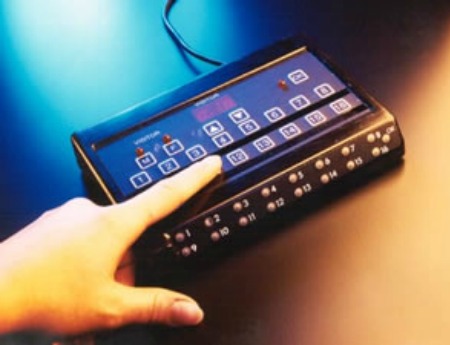Nielsen Announces Delay Replacing Local-Market Diaries

Getting rid of paper diaries after 60 years isn’t easy for Nielsen.
Nielsen is telling its clients there will be a short delay in getting new local ratings in mid-size and smaller markets. And it says that competitors using big data to measure local viewing should take another look at their numbers because converting set-top box data to accurate viewership numbers can be challenging.
In 2016, Nielsen announced that it will replace the paper diaries that Nielsen families use to record what they’re watching on television by collecting data electronically from meters and set-top boxes. The original plan was for diaries to be history by 2017.

On Thursday Nielsen said the 137 diary markets would officially change to the new methodology in July instead of in June as previously scheduled.
Nielsen is also delaying its delivery of rating data using the new technology for past months—March and February 2018 and November 2017-- that clients can use to compare the new data with the data they have been using and see what impact the change has. To keep the May 2018 data on schedule, Nielsen will not process April impact data.
Nielsen said it needs the extra time to perform additional validation of the new methodology and to incorporate needed adjustments to some of its calculations.
“We’ve made great progress. We have delivered impact data to the top 25 markets since late fall last year,” said Kelly Abcarian, senior VP at Nielsen.
The smarter way to stay on top of broadcasting and cable industry. Sign up below
“We were expecting to get evaluation data for markets 25 through 44 out the door to our clients this month. Abcarian said. “But we are holding that data to continue ensuring we’ve got the data right and we’ll be looking to give clients an update in mid-June of when we’ll be releasing that data.”

Abcarian said that the biggest switch is going from using information from the paper diaries to create local ratings in mid-sized to small market four times a year during sweeps to delivering 12 months of electronic measurement.
The delay from June to July will have a limited impact because historically, Nielsen didn’t produce ratings in June and the new data would line up with the old July sweeps.
The change has presented Nelsen with some unexpected challenges. A big one was millions of missing minutes of viewing because the data it got from set-top boxes was incomplete most likely because of software issues in the boxes, which weren’t designed to measure viewing.
The missing viewing information accounted to between 20% and 40% in some markets.
“If we processed that data as is, that would result in a significant decline in the ratings,” Abcarian said.
Nielsen said it is able to understand what the missing data look like because it has data from its meter panels. Those panels are set up to capture over-the-air viewing, a big factor particularly in smaller markets.
“We’ve been working to close that gap. We’ve worked with our data providers to help correct some of the errors that are at a box level,” Abcarian said. “We’ve also looked at ways in which we can understand the real tune-in behavior that should be there. And we are making adjustments on our side in which to ensure that we can accurately account for the real tuning behavior that should be coming through into the audience estimates.”
She said Nielsen has reduced the impact of these missing viewing minutes to the single digit range.
While Nielsen gets data from DirecTV, Dish Network and Charter and will be bringing Comcast homes online, Abcarian notes that using only set-top data can miss other types of viewing, particularly in smaller markets.
Nielsen has a panel of about 8,000 homes that watch TV over the air. “We can bring that into our combined set-top measurement to account for tuning in the local broadcast home, which can be as high 55% of news ratings or sports ratings impressions,” she said.
Since announcing the plan to get rid of diary, Nielsen installed panels with meters in 14 diary markets. “We were able to use those markets as a guidepost to help us understand the estimates we should expect to see come through” when the new methodology was employed, Abcarian said.

Some of Nielsen’s competitors are using set-top box data to deliver local ratings.
“Our competitors should be seeing some of the same problems that we’ve identified and worked to correct,” she said. One of those competitors, she said, is using viewing data from past years to fill in for missing viewing, Abcarian said. “So what does that mean? It means they’re introducing historical viewing behavior from as much as two years ago to account for potential declines today and from a client perspective, stations would see higher ratings, while agencies are paying for viewers that don’t actually exist today,”
Abcarian says that replacing the diaries with electronic data collect has homes using television (HUTs) and people using television (PUTs).
“IN general lower-ranked stations and those with less recall saw greater lifts than the more recognized stations,” she said. “We saw increases in sports programs, with younger viewers and with cable networks.” With the new methodology, cable’s share was more in line with what Nielsen sees in its people meter markets.
While there’s still a lot of work to be done, Nielsen expects to make its latest deadlines.
“Yes we’re confident in the new timelines we’ll be publishing to our clients,” Abcarian said.
Jon has been business editor of Broadcasting+Cable since 2010. He focuses on revenue-generating activities, including advertising and distribution, as well as executive intrigue and merger and acquisition activity. Just about any story is fair game, if a dollar sign can make its way into the article. Before B+C, Jon covered the industry for TVWeek, Cable World, Electronic Media, Advertising Age and The New York Post. A native New Yorker, Jon is hiding in plain sight in the suburbs of Chicago.

